How to putty the corners correctly?
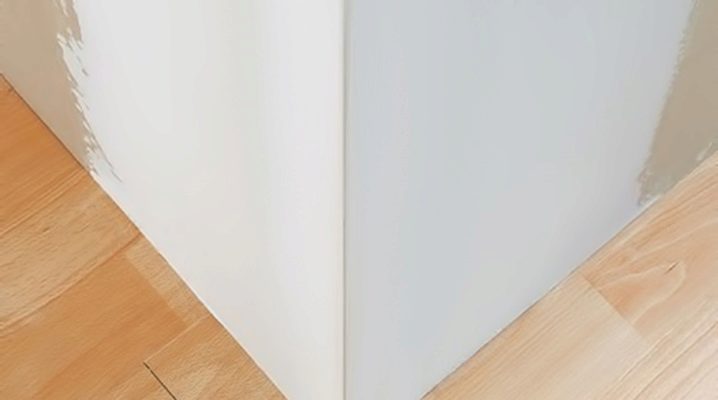
Formation of even inner and outer corners is a very important point when carrying out finishing work. Correctly shaped corners give the room a neat appearance and emphasize the geometry of the space. With strict adherence to the finishing technology and a competent choice of consumables, the process of self-filling will not cause difficulties.
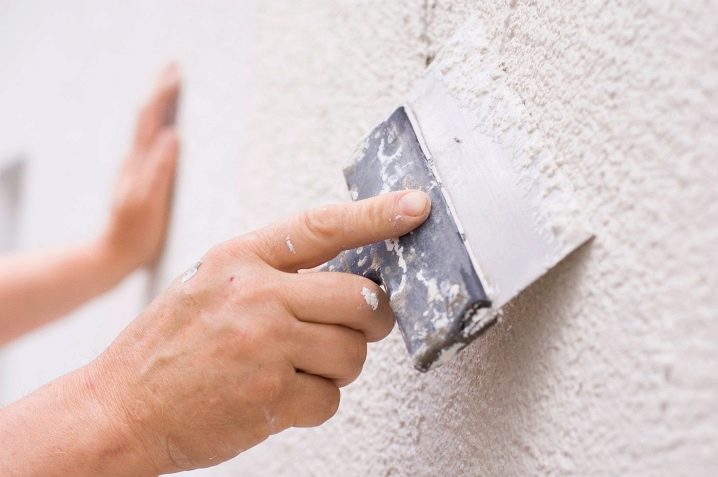
Material selection
In the modern market of building and finishing materials, putties are presented in a wide range. Their compositions differ in purpose, properties and pot life.
Before you start buying material, you need to familiarize yourself with some of the characteristics of each type:
- Polymer putty is a finishing coat and is used at the end of finishing works. The mixture evens out the wall surface well and has a high moisture resistance;
- Gypsum is approved for use only in closed rooms. Forms a smooth surface, quickly hardens and dries;
- Cement putty has high moisture resistant qualities and can be used for finishing bathrooms and kitchens. The downside of this type is the likelihood of cracking after drying. To prevent cracking, the surface should be periodically moistened until the inner layer is completely dry.
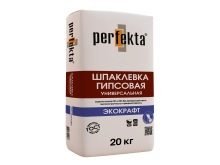
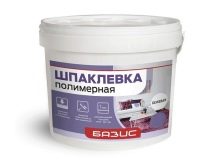

According to the form of release, putties are dry, requiring independent preparation, and ready-made. For their intended purpose, specialized, leveling, finishing, decorative and universal solutions are distinguished. The choice of material is carried out individually and depends on the type of work performed and the degree of influence of external factors.
You should also purchase a primer. For the formation of both external and internal corners, it is recommended to use deep penetration solutions. This will ensure good adhesion of the mortar to the wall and prevent the plaster from peeling and chipping away.
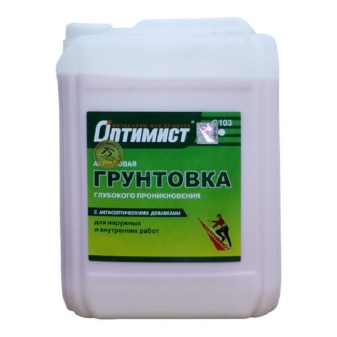
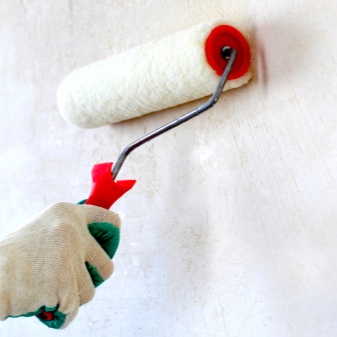
From the tools you need to prepare three spatulas: two straight lines 25 and 10 cm wide, and an angular one. To obtain a homogeneous solution when using dry mixtures, you will need a paddle nozzle for a drill or a construction mixer. As a surface leveler, you can use a sanding trowel with an emery cloth or mesh fixed on it, and when preparing the surface for gluing wallpaper, it is better to use an abrasive with a grain size of P100 - P120.
To strengthen the outer corners, you should purchase perforated corners, and to form the inner corners - a serpyanka mesh.
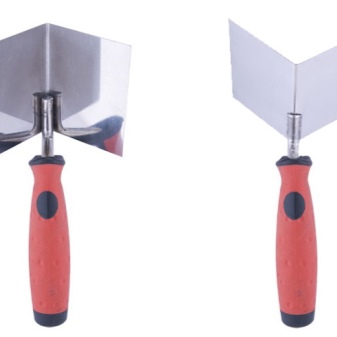
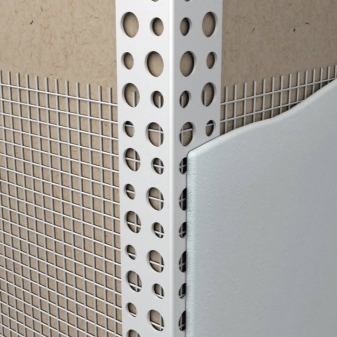
Work technology
The first step should be a visual inspection of the corner surface and the removal of obvious protrusions using a construction knife. Then you should check the verticality of the walls using a level and mark strong deviations with a pencil. Further, both walls are grounded at a distance of 30 cm from the corner. After that, you need to apply the necessary layer of putty in places with pronounced depressions and chips.
The thickness of the layer should be small, therefore, if necessary, it is better to apply several thin layers.
The next step is to apply a layer of putty on the wall surface adjacent to the corner. from top to bottom and installation in the newly applied solution of a metal or plastic corner with perforated edges. Excess mortar that comes out through the holes in the corner must be removed with a narrow spatula.
When using a plastic model, it is important not to confuse it with a plastering corner, which has sufficiently thick sides and is not suitable for putty. The advantage of plastic linings over metal ones is the impossibility of their oxidation, corrosion and destruction.
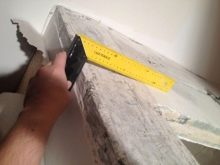
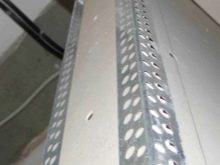
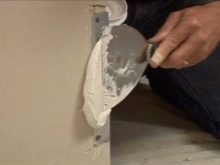
Next, the perforated corner must be level and add a solution under it where necessary. After the putty has set, you can start to putty on the adjacent walls. The solution is applied alternately on both surfaces at a distance of 25-30 centimeters from the corner and leveled with a spatula. Excess mixture is removed with a narrow spatula. The thickness of the putty to be applied must be sufficient so that the perforated pad does not come off during sanding.
If wallpapering is not planned, then the chamfer at the junction can be removed. This will prevent subsequent chipping, but will slightly reduce the attractiveness of the corner.
After the mortar has dried, you can start grinding the corner and then priming the surface. Then a finishing putty is applied, which, after drying, is also carefully sanded. If, after applying the finishing solution, some flaws were found, then they should be putty, allowed to dry and sanded again. At the end, the surface is primed again, after which it becomes ready for a fine decorative finish.
It should be remembered that the formation of slopes using a perforated corner is possible when making right angles. Material is not used for finishing beveled corners.
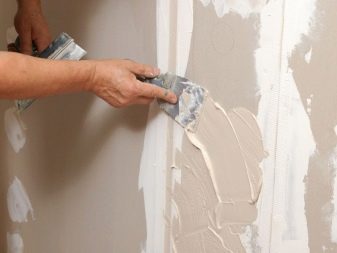
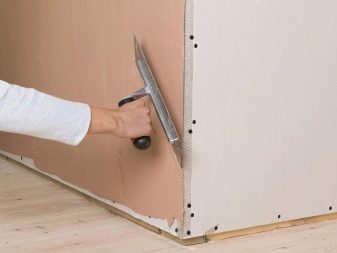
The ways
In order to properly putty the inner corner, you must first draw a construction square from the ceiling to the floor and mark all deviations with a pencil. The protrusions are cut off with a planer, and the depressions are grounded and putty. After the mortar has dried, the surface of the walls forming the corner should be primed, and only then proceed to the putty.
The technology consists in alternately leveling each of the walls with the application of the mortar as close to the corner as possible. Excess mortar is also removed one by one - first from one wall, then from the other. To make it easier for yourself to work on the formation of the corner, you should use a special corner spatula, with which you can form a perfectly even joint. After applying the mortar and initial setting, it is necessary to perform a control measurement of the angle using a construction square. Revealed grooves will have to be putty again, and irregularities will be removed during subsequent sanding.
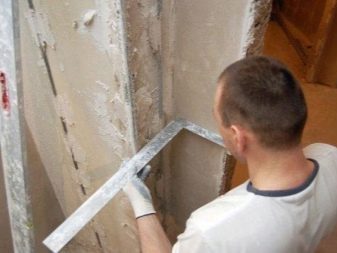
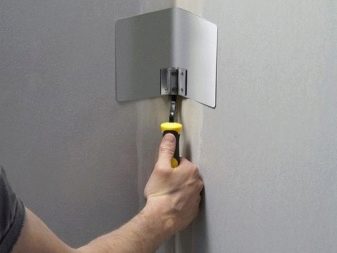
If the joint is slightly rounded, then the formation of a right angle is achieved by grinding with an emery cloth No. 150. Grinding of the adjoining walls is also carried out alternately until it is possible to remove a sharp and even inner edge.
When applying plasterboard corners to butt-off walls, a self-adhesive serpentine mesh should be installed. Its width should be 5 cm. The sticker must be made very carefully, avoiding bending and skewing of the material. Further work is carried out according to the technology used for concrete foundations.
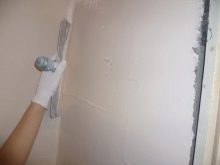
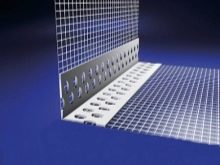

Complex shapes
For filling complex architectural structures and arches, it is recommended to use a plastic corner that bends in any direction and allows you to form even and beautiful corners. Before proceeding with the application of the putty, you need to visually inspect the surface and remove the protrusions using a planer or a construction knife. When finishing plasterboard structures, you need to run your hand along the edge of the surface and check it for protruding screws. If protruding caps are found, the fasteners should be tightened.
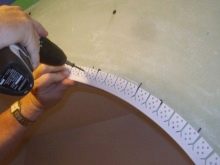

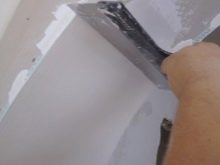
Then the surface must be primed and allowed to dry. Next, you should measure the edge of the formed corner and measure the arched corner of the required length. You need to cut off so that there are no joints along the entire rib.
If, for some reason, the pad is mounted end-to-end, then the connecting ends of the corner should be fixed with Fugen glue and additionally fixed with a construction stapler.
After fixing the lining, you should proceed to the putty of the curly bends. You need to start drawing the corner from a curved surface, and then move on to a flat one. An important condition is the uniform application of the composition. Excessive thickness and inaccuracies in the formation of smooth transitions can be leveled by sanding, for which paper marked P120 is recommended. Further, the surface is dedusted and primed.
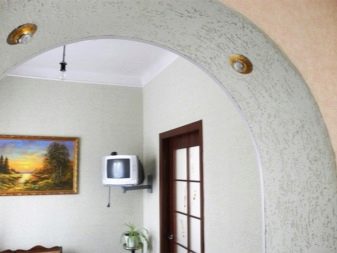
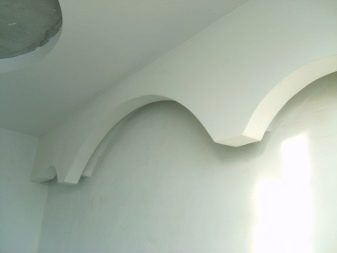
Examples of execution
Strict adherence to the installation technology and accuracy during the work allows you to easily make repairs with your own hands, saving time and without resorting to the services of specialists.
- Finishing of the inner wall joint with a corner trowel.
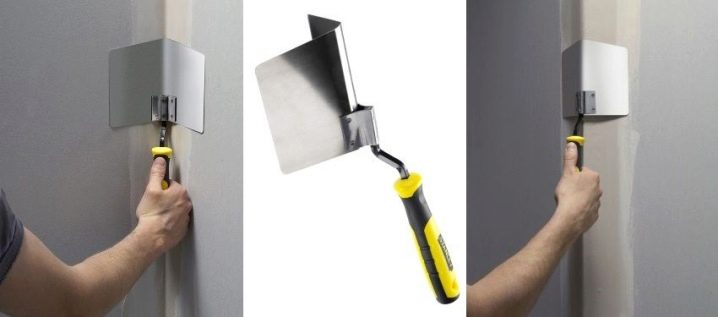
- Decoration of the outer corner with a plastic corner.
- Installation of a metal perforated corner on the outer corner.
- Preparation of curly corners for putty using overlays.
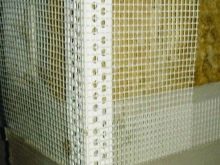

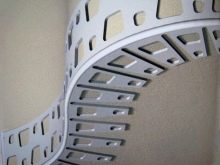
See below for expert advice on how to properly putty corners.













The comment was sent successfully.